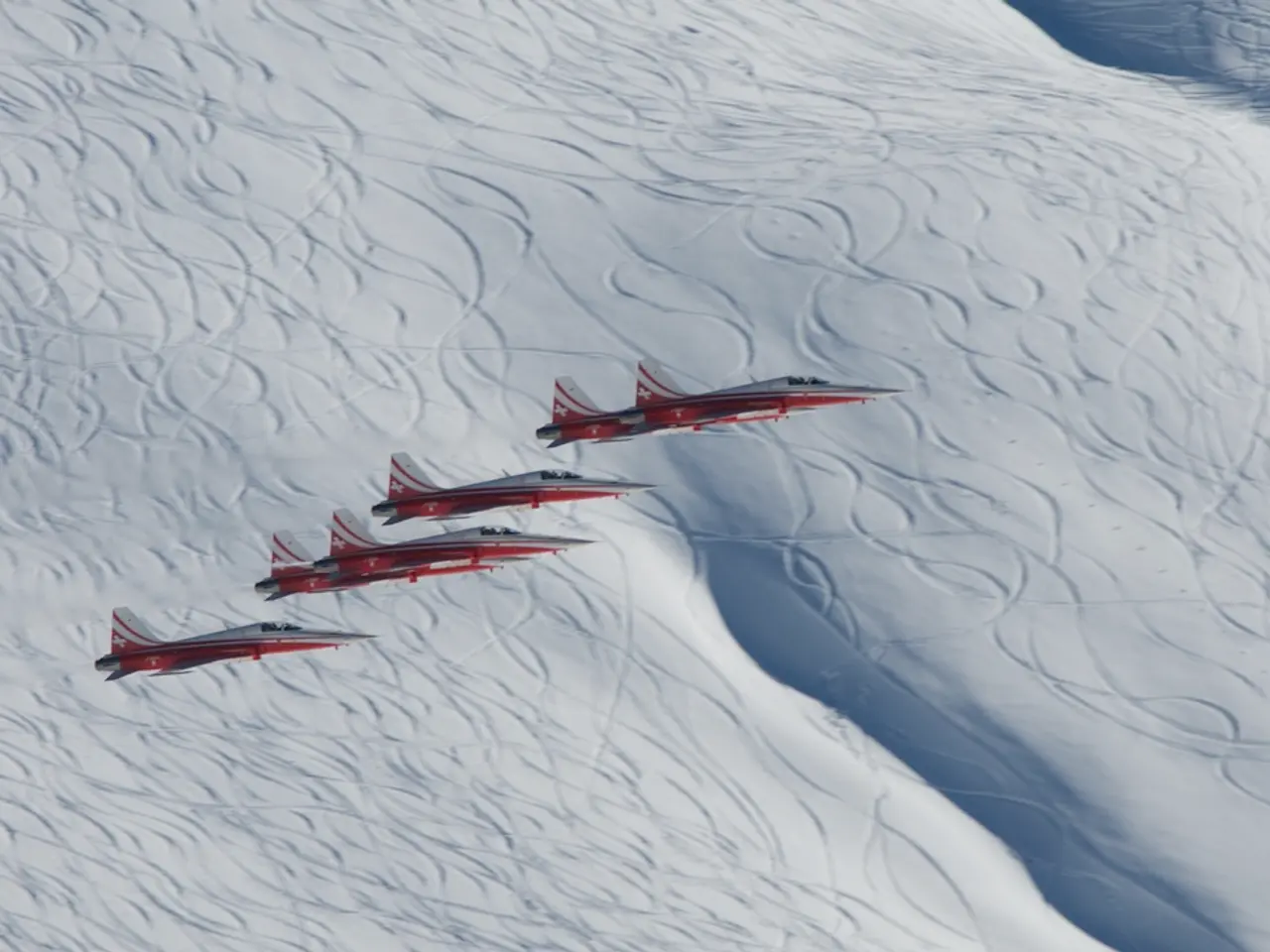Competition for drones capable of thriving in Arctic conditions is escalating, with the United States seemingly falling behind
The United States Army is taking significant steps to enhance its presence and capabilities in the Arctic region, with a focus on the development and integration of Arctic-adapted drones. This strategic move is in response to the rapid advancements being made by Russian drones in the region.
One of the key areas of focus is the reduction of landing requirements for drones. The Army is exploring the possibility of developing parachute or glider-drop capabilities for drones, which would enable them to land in remote and challenging Arctic conditions.
However, American drones currently face a limitation above the seventieth parallel north, losing connectivity and communication abilities. To address this issue, the Army is continuing to fund and test low-Earth orbit satellites developed by companies like SpaceX and OneWeb. These satellites are expected to enhance positioning, navigation, and timing, ensuring uninterrupted communication even in the Arctic.
Russia, meanwhile, is planning to build an Arctic drone reconnaissance base four hundred and twenty miles off the Alaskan coastline. By 2025, it is projected that Russian drones will far outpace the United States in terms of monitoring air, surface, and subsurface activity in the Arctic region.
To counter this, the Army is prioritizing research into winterizing military-grade drones, with a focus on reconnaissance, cargo, and strike drones for operating in the Arctic. This includes the consideration of flight durability against strong crosswinds, a common occurrence in the Arctic where wind speeds can exceed eighty knots.
In addition, the Army is looking into the use of commercially available Arctic-adapted drones, such as the ArcticShark, in cold-weather warfare exercises. However, the ArcticShark's max payload weight of only seventy pounds could constrain resupply missions.
The development of polar drones does not necessitate new technologies but rather requires augmenting existing systems. For instance, drone spectral imagery resolution can measure distances as small as one centimeter in photos, surpassing satellite and manned aircraft imagery. This high-resolution imagery can expose electromagnetic equipment and collect valuable information for enemy analysis.
The Northern Warfare Training Center and Joint Pacific Alaska Range Complex provide Arctic terrain and weather conditions for practitioners to incorporate these systems into military exercises. This practical training is crucial for the Army to effectively utilise these drones in the field.
The Army's Regaining Arctic Dominance strategy states that employing Arctic-adapted drones will serve as a "combat multiplier" in projecting presence. Drones can travel greater ranges faster than ground support vehicles in resupply missions, providing a significant advantage in the Arctic's vast and challenging terrain.
Moreover, investments in SpaceX Starlink and OneWeb satellites will provide the Army with continuous coverage and harden navigation systems against adversarial jamming. This will ensure uninterrupted communication and navigation, even in the face of potential threats.
Boeing is also developing a climate-friendly military drone designed for Arctic deployment. This drone offers capabilities such as extended endurance, cold-weather operation, and advanced surveillance technology, further enhancing the Army's Arctic capabilities.
In conclusion, the development and integration of Arctic-adapted drones is a priority for the Army as it seeks to respond to technological advances in Russian drones in the Arctic. These drones, coupled with investments in satellite technology, will serve as a valuable asset in projecting presence and maintaining operational superiority in the Arctic.







